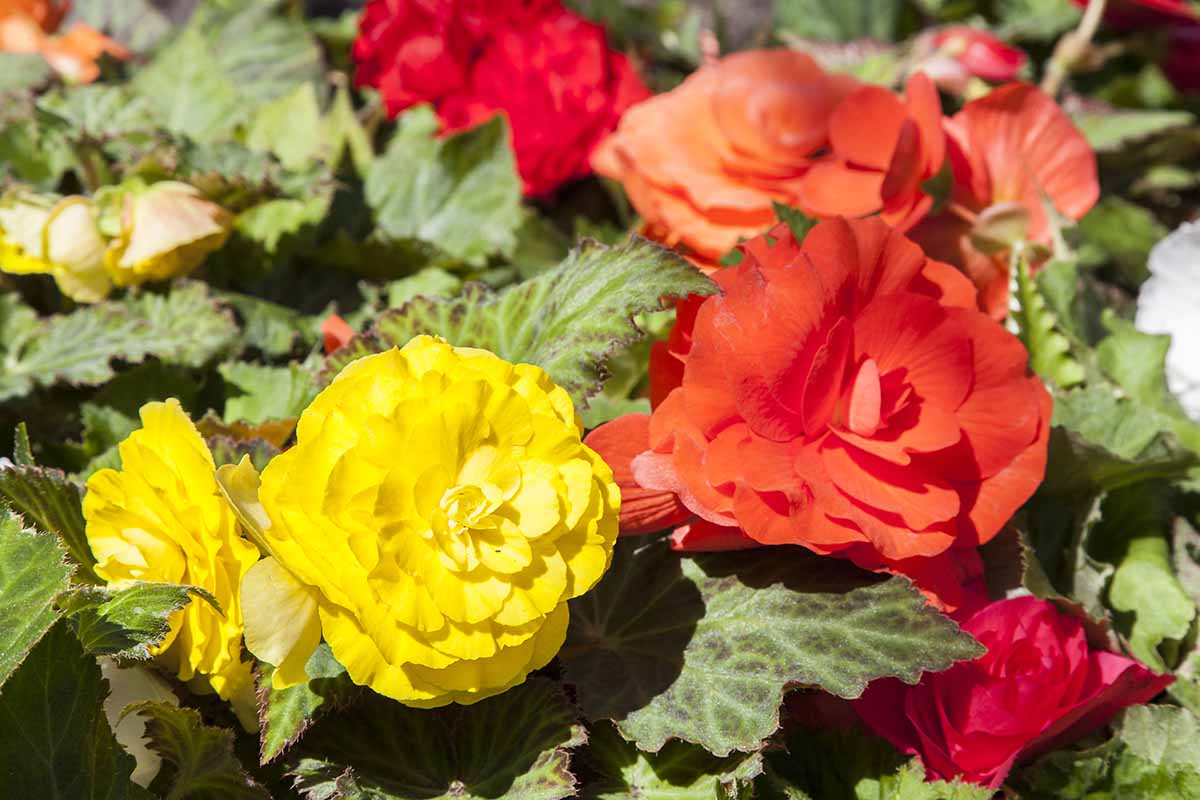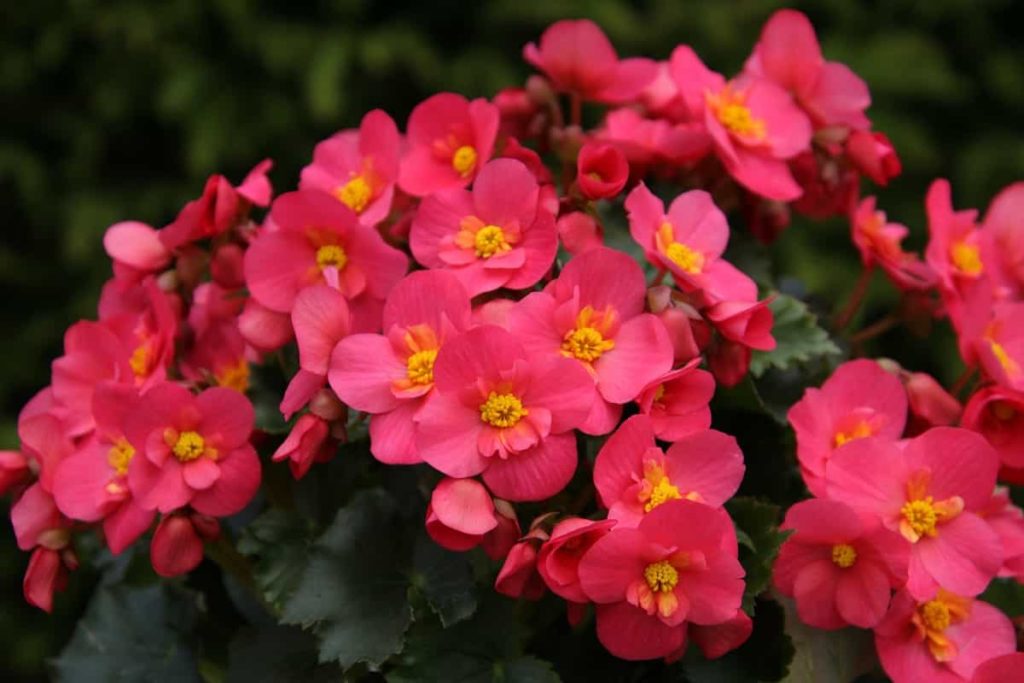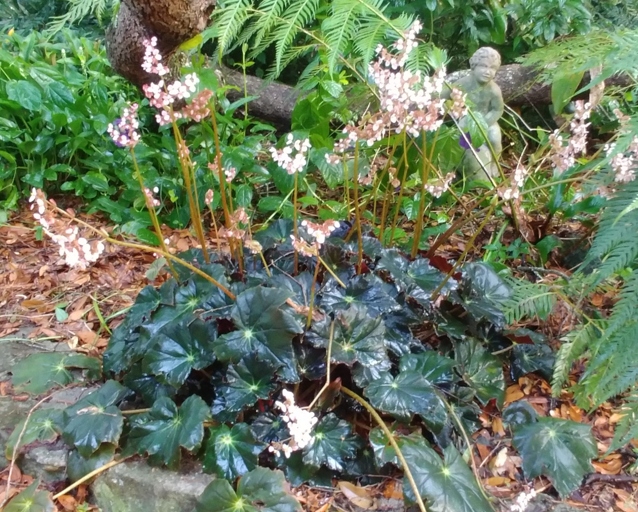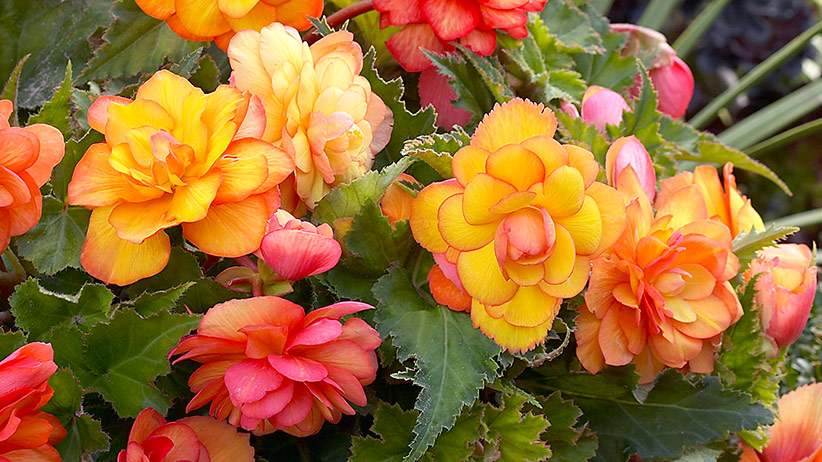Understanding Begonia Basics: Lighting, Watering, and Humidity
When it comes to learning how to look after begonias, understanding the basics of lighting, watering, and humidity is crucial for their health and growth. Begonias are adaptable plants that can thrive in a variety of environments, but they do have specific requirements that need to be met. Lighting, for instance, plays a significant role in begonia care. Most begonias prefer bright, indirect light, but some species can tolerate low light conditions. Placing begonias near an east- or west-facing window is ideal, as this provides gentle, indirect light that promotes healthy growth.
Watering is another critical aspect of begonia care. Begonias prefer well-draining soil and should be watered carefully to avoid overwatering. The soil should be moist but not waterlogged, as this can lead to root rot and other problems. A good rule of thumb is to water begonias when the top inch of soil feels dry to the touch. Humidity is also an important factor, as begonias prefer a relatively high humidity environment, typically between 40-60%. To maintain optimal humidity levels, you can place the pot on a tray filled with water and pebbles or use a humidifier nearby.
By understanding and meeting these basic requirements, you can create an environment that allows your begonias to thrive. Remember, learning how to look after begonias is an ongoing process, and being aware of their specific needs is key to providing the best care. By following these guidelines and adjusting to your begonias’ unique needs, you can enjoy beautiful, healthy plants that bring joy and beauty to your space.
Soil and Fertilization: Creating a Nutrient-Rich Environment
When it comes to learning how to look after begonias, understanding the importance of soil and fertilization is crucial for their health and growth. Begonias require a well-draining potting mix that is rich in organic matter. A good quality potting mix specifically designed for begonias or tropical plants is ideal. This type of mix will contain the necessary nutrients and pH balance for optimal growth.
Fertilization is also essential for begonias. A balanced, water-soluble fertilizer (20-20-20) can be applied once a month during the growing season (spring and summer). Dilute the fertilizer to half the recommended strength to avoid burning the roots. It’s also a good idea to use a fertilizer that is high in phosphorus (such as 15-30-15) to promote blooming and root growth.
Soil pH is another critical factor in begonia care. Most begonias prefer a slightly acidic to neutral soil pH, ranging from 6.0 to 7.0. If your potting mix is too alkaline, you can add a small amount of peat moss or sulfur to lower the pH. Conversely, if the mix is too acidic, you can add a small amount of lime to raise the pH.
By providing your begonias with a nutrient-rich environment, you can promote healthy growth, blooming, and root development. Remember to monitor your plants’ response to fertilization and adjust as necessary. With the right soil and fertilization, you’ll be well on your way to becoming an expert in how to look after begonias.
Pruning and Grooming: Encouraging Healthy Growth and Blooming
Pruning and grooming are essential techniques for maintaining the health and appearance of begonias. By pruning begonias regularly, you can encourage bushy growth, promote blooming, and remove dead or damaged leaves and stems. To prune begonias, use a pair of clean, sharp scissors or pruning shears to cut back leggy stems, remove dead flowers, and shape the plant.
When pruning begonias, make sure to remove any dead or damaged leaves or stems, as these can harbor pests and diseases. Cut back leggy stems to encourage branching and promote a fuller plant. You can also remove dead flowers to encourage the plant to produce more blooms. To shape the plant, prune back any overgrown stems or branches to maintain a desired shape.
In addition to pruning, grooming is also an important part of begonia care. Grooming involves removing dead or dying leaves and stems, as well as dusting the leaves to prevent pests and diseases. To groom begonias, use a soft-bristled brush or a damp cloth to gently remove any dead or dying leaves or stems. You can also use a mild soap solution to dust the leaves and prevent pests and diseases.
By pruning and grooming begonias regularly, you can encourage healthy growth and blooming, and maintain the appearance of your plants. Remember to prune and groom begonias at the right time, as pruning at the wrong time can stress the plant and reduce blooming. With regular pruning and grooming, you can keep your begonias looking their best and enjoy beautiful blooms all season long.
Pest Control and Disease Prevention: Common Issues and Solutions
When learning how to look after begonias, it’s essential to be aware of the common pests and diseases that can affect these plants. Mealybugs, spider mites, and root rot are just a few of the issues that can impact begonia health and growth. To prevent these problems, it’s crucial to maintain good hygiene practices, such as washing your hands before handling the plants and removing any dead or dying leaves or stems.
Mealybugs are small, white insects that can be found on the leaves and stems of begonias. To control mealybugs, use a mild soap solution or insecticidal soap to gently wash the affected areas. Spider mites are tiny, spider-like insects that can cause yellowing or bronzing of the leaves. To control spider mites, use a fine spray of water to wash the leaves, and then treat the plant with a miticide.
Root rot is a common problem that can occur when the soil is too wet or waterlogged. To prevent root rot, make sure to use a well-draining potting mix and avoid overwatering. If you suspect that your begonia has root rot, remove the plant from the pot and inspect the roots. If the roots are soft and mushy, trim them back to healthy tissue and repot the plant in fresh, well-draining soil.
By being aware of these common pests and diseases, you can take steps to prevent them and keep your begonias healthy and thriving. Regularly inspect your plants for signs of pests or diseases, and take action promptly if you notice any issues. With proper care and attention, you can enjoy beautiful, healthy begonias that bring joy and beauty to your space.
Propagation and Repotting: Expanding Your Begonia Collection
Learning how to propagate and repot begonias is an essential skill for any begonia enthusiast. Propagation allows you to create new plants from existing ones, while repotting gives your begonias the room they need to grow and thrive. In this section, we’ll explore the different methods of propagation and repotting, and provide tips on how to do it successfully.
Leaf cuttings are a popular method of propagation for begonias. To take a leaf cutting, simply remove a healthy leaf from the mother plant, and trim the petiole (the stem that attaches the leaf to the plant) to about 1-2 inches long. Place the cutting in a pot filled with a well-draining mix, and keep the soil moist but not waterlogged. Roots should develop within 1-2 weeks, and a new plant will begin to grow.
Stem cuttings are another method of propagation for begonias. To take a stem cutting, cut a section of stem from the mother plant, making sure each section has at least two nodes (the joint where a leaf meets the stem). Remove lower leaves, and plant the cutting in a pot filled with a well-draining mix. Keep the soil moist but not waterlogged, and roots should develop within 1-2 weeks.
Division is a method of propagation that involves separating a mature begonia plant into smaller sections. This method is best done in the spring or summer, when the plant is actively growing. Simply dig up the plant, and gently separate the roots into smaller sections. Replant each section in a new pot, and keep the soil moist but not waterlogged.
Repotting is an essential part of begonia care, as it gives the plant the room it needs to grow and thrive. The best time to repot a begonia is in the spring or summer, when the plant is actively growing. Choose a pot that is only slightly larger than the previous one, and use a well-draining mix to prevent waterlogged soil. Water the plant well after repotting, and keep the soil moist but not waterlogged.
Common Begonia Varieties: Characteristics, Care, and Display
Begonias are a diverse group of plants, with many different varieties to choose from. Some popular varieties include Begonia x hybrida, Begonia semperflorens, and Begonia maculata. Each of these varieties has its own unique characteristics, care requirements, and display ideas.
Begonia x hybrida is a popular variety of begonia that is known for its large, showy flowers and compact growth habit. This variety is ideal for containers or hanging baskets, and can thrive in a variety of lighting conditions. To care for Begonia x hybrida, make sure to provide it with bright, indirect light and maintain a consistent temperature between 65-75°F (18-24°C).
Begonia semperflorens is another popular variety of begonia that is known for its small, white flowers and trailing growth habit. This variety is ideal for hanging baskets or containers, and can thrive in a variety of lighting conditions. To care for Begonia semperflorens, make sure to provide it with bright, indirect light and maintain a consistent temperature between 65-75°F (18-24°C).
Begonia maculata is a variety of begonia that is known for its large, spotted leaves and upright growth habit. This variety is ideal for containers or indoor gardens, and can thrive in low-light conditions. To care for Begonia maculata, make sure to provide it with low to moderate light and maintain a consistent temperature between 65-75°F (18-24°C).
When it comes to displaying begonias, there are many different options to choose from. Begonias can be displayed in containers, hanging baskets, or indoor gardens, and can be paired with a variety of other plants to create a unique and beautiful display. Some popular display ideas for begonias include creating a begonia “tree” by training the stems to grow up a trellis, or creating a begonia “wall” by training the stems to grow along a wall or fence.
Troubleshooting Common Begonia Problems: Solutions and Prevention
When learning how to look after begonias, it’s essential to be aware of the common problems that can affect these plants. Yellowing leaves, droopy stems, and lack of blooms are just a few of the issues that can impact begonia health and growth. In this section, we’ll explore the causes of these problems and provide solutions and prevention strategies.
Yellowing leaves are a common problem in begonias, and can be caused by a variety of factors, including overwatering, underwatering, and nutrient deficiencies. To prevent yellowing leaves, make sure to provide your begonias with the right amount of water and nutrients. Check the soil regularly to ensure it’s not too wet or dry, and fertilize your begonias regularly to provide them with the nutrients they need.
Droopy stems are another common problem in begonias, and can be caused by a lack of light, water, or nutrients. To prevent droopy stems, make sure to provide your begonias with bright, indirect light and maintain a consistent temperature between 65-75°F (18-24°C). Also, make sure to water your begonias regularly and fertilize them to provide them with the nutrients they need.
Lack of blooms is a common problem in begonias, and can be caused by a variety of factors, including lack of light, water, or nutrients. To encourage blooming in begonias, make sure to provide them with bright, indirect light and maintain a consistent temperature between 65-75°F (18-24°C). Also, make sure to water your begonias regularly and fertilize them to provide them with the nutrients they need.
By being aware of these common problems and taking steps to prevent them, you can keep your begonias healthy and thriving. Remember to monitor your plants regularly and take action promptly if you notice any issues. With proper care and attention, you can enjoy beautiful, blooming begonias that bring joy and beauty to your space.
Creating a Begonia-Friendly Environment: Tips for Indoor and Outdoor Spaces
When learning how to look after begonias, it’s essential to create a begonia-friendly environment that meets their specific needs. This includes providing the right temperature, air circulation, and protection from extreme weather conditions. In this section, we’ll explore the importance of creating a begonia-friendly environment and provide tips for indoor and outdoor spaces.
Temperature is a critical factor in begonia care, and most begonias prefer daytime temperatures between 65-75°F (18-24°C) and nighttime temperatures around 55-65°F (13-18°C). To create a begonia-friendly environment, make sure to place your begonias in a location that maintains a consistent temperature within this range.
Air circulation is also essential for begonias, as it helps to prevent fungal diseases and promotes healthy growth. To create a begonia-friendly environment, make sure to provide good air circulation around your plants. This can be achieved by placing them at least 6-8 inches away from any walls or other plants.
Protection from extreme weather conditions is also crucial for begonias. To create a begonia-friendly environment, make sure to protect your plants from direct sunlight, strong winds, and extreme temperatures. This can be achieved by placing them in a shaded location or using a sheer curtain to filter the sunlight.
By creating a begonia-friendly environment, you can help your plants thrive and enjoy beautiful, blooming begonias that bring joy and beauty to your space. Remember to monitor your plants regularly and take action promptly if you notice any issues. With proper care and attention, you can enjoy a stunning display of begonias that will last for months to come.








